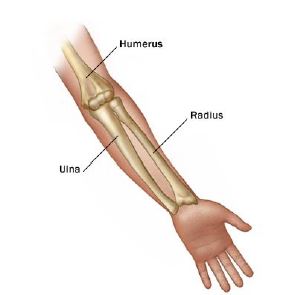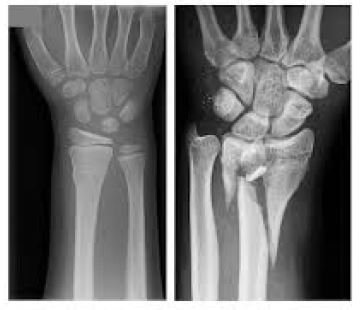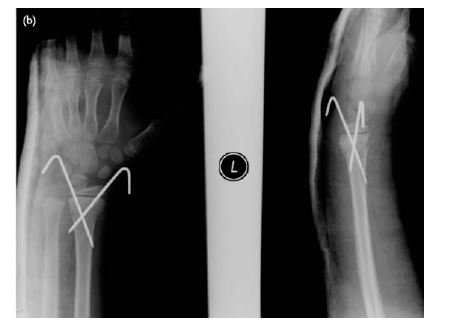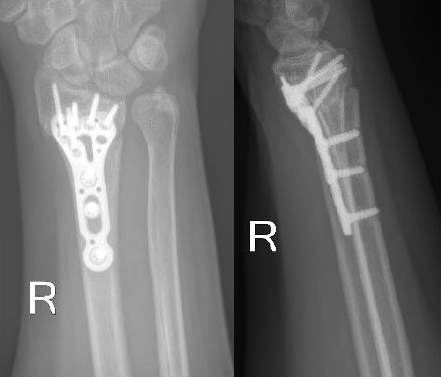Distal Radius Fracture
What is the distal radius
The distal radius is the end of the radial bone. It connects to the carpal bones at the wrist. It transmits 80% of the forces across the wrist to the forearm.
What is a distal radius fracture
Almost always, the distal radius breaks close to, or at the joint with the carpal bones. It most often occurs from a fall on an outstretched wrist. It is the most common type of break in the arm.
Who gets a distal radius fracture
They are common in two patient populations. It is the most common arm fracture in kids. These are usually non-displaced or ‘greenstick’ type fractures from falls. The second population in older patients with moderate osteoporosis. Of course, they can occur in just about anyone with enough force (sports, skating, falls on ice).
How are distal radius fractures described
Most fractures are dorsally displaced due to the nature of the injury (fall on an outstretched hand). They can be extra-articular—meaning the joint is not involved. They also can be intra-articular—fractures into the joint. Intra-articular fractures have a worse prognosis.
How are distal radius fractures diagnosed
Most often, there will be swelling, pain, and limited motion in the affected wrist. There also can be an obvious deformity. X-rays are essential in making the diagnosis. CT scans are often used with intra-articular fractures to plan surgical treatment.
How are distal radius fractures treated?
Non-displaced fractures can be treated in a cast until swelling and pain have subsided. In an adult, a non-displaced fracture will heal over the course of 6-10 weeks. Frequent x-rays are taken to ensure there has been no significant displacement. A fracture brace can also be used.
Displaced Fractures in children can be reduced and casted. Sometimes they need to be held with a pin. This is done under sedation.
Displaced fractures in adults are usually treated with open reduction and internal fixation. This is most often done with a plate placed on the palm side of the forearm. With stable plate fixation, patients can often go into a removable brace at 2-4 weeks after surgery.
What can be expected if you have a distal radius fracture
The outcome of the injury depends on two critical factors. The first is the nature and severity of the injury. The more severe the injury, the more likely there will be complications. The second factor is the alignment of the wrist. The more normal the alignment of the radius, the better the result will be. This is not often the case with highly displaced or comminuted fractures—especially if the joint is involved.





